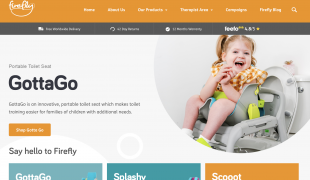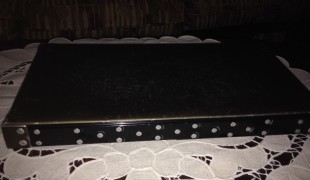- 4796
- 403
- 8
- 6
- 0
- Help Ukraine
About the solution
Trevor, a missionary from the White Fathers (the Society of Missionaries of Africa), was in Tamala, Ghana when he saw a lot of marginalised and vulnerable disabled people who were living in the streets.
He wanted to do something to help them and so he had the idea of creating a wheelchair tricycle that enables the user to sit in a wheelchair-type bike seat and move pedals with their hands, enabling them to have mobility.
For this, the priest had the help of volunteers and donors. He developed theses devices using pieces of old bicycles donated by friends or acquaintances.
“When I started, I thought of turning this tricycle into an opportunity for street kids. I asked some of them to help me. At first, we produced about ten a week. Now, slowly, we have reached fifty”, said the inventor.
Each tricycle has a development cost of about 250€.
“They have been given to men, women and older children who are too poor to purchase a wheelchair like this for themselves. Some people offer us a little money if they have it — but for the most part, those who are receiving them are too poor to pay anything at all. The wheelchair tricycles allow people to have dignity. When a disabled person manages to obtain one of these means he enters a new dimension and regains a hope of life. Thanks to the tricycle, he can move anywhere. This allows him to relate with many people and to grow. Not only that, but his muscles become stronger and this improves his physical health condition. Now there is a glimmer of gratitude and light in their lives”, Trevor explained.
Adapted from: https://bit.ly/2J1zGCT
This solution shall not include mention to the use of drugs, chemicals or biologicals (including food); invasive devices; offensive, commercial or inherently dangerous content. This solution was not medically validated. Proceed with caution! If you have any doubts, please consult with a health professional.
DISCLAIMER: This story was written by someone who is not the author of the solution, therefore please be advised that, although it was written with the utmost respect for the innovation and the innovator, there can be some incorrect statements. If you find any errors please contact the patient Innovation team via info@patient-innovation.com
-
-
247
-
0
-
2720

Collaborator James Leckey makes equipment to improve the quality of life and social inclusion of children with special needs
MOVING IN A WHEELCHAIR: Moving using a wheelchair.
BODY BALANCE: Maintaining body balance
STANDING UP: Standing up from a seated position
Playing
Neuromuscular Disorders
Assistive Daily Life Device (to help ADL)
Walking Aid (wheelchair/walker/crutches)
Assistive Technology access
5 Senses support devices: (glasses, hearing aids, headphones...)
Restoring mobility
Promoting self-management
Managing Neurological Disorders
Promoting inclusivity and social integration
Maintaining Balance and Mobility
Raise awareness
General and Family Medicine
Neurology
Orthopedics
Pediatrics
Physical Medicine and Rehabilitation
United States
-
-
-
348
-
0
-
4629

Step articulated and mobile
MOVING IN A WHEELCHAIR: Moving using a wheelchair.
Traveling
Urban exploration
Paralysis
Assistive Daily Life Device (to help ADL)
Walking Aid (wheelchair/walker/crutches)
Restoring mobility
Promoting self-management
Managing Neurological Disorders
Building Supportive Community Relationships
Promoting inclusivity and social integration
Recovering from Traumatic Injuries
Maintaining Balance and Mobility
To improve Treatment/Therapy
Raise awareness
Caregiving Support
Neurology
Orthopedics
Rheumatology
Portugal
-
-
-
402
-
0
-
4834

Students create device to help women live with multiple sclerosis
Grip
CAREGIVING
MOVING IN A WHEELCHAIR: Moving using a wheelchair.
Shopping
Multiple Sclerosis
Assistive Technology access
Walking Aid (wheelchair/walker/crutches)
Restoring mobility
Recovering cognitive function
Promoting self-management
Promoting inclusivity and social integration
Maintaining Balance and Mobility
Raise awareness
General and Family Medicine
Internal Medicine
Orthopedics
Physical Medicine and Rehabilitation
Canada
-
 en
en